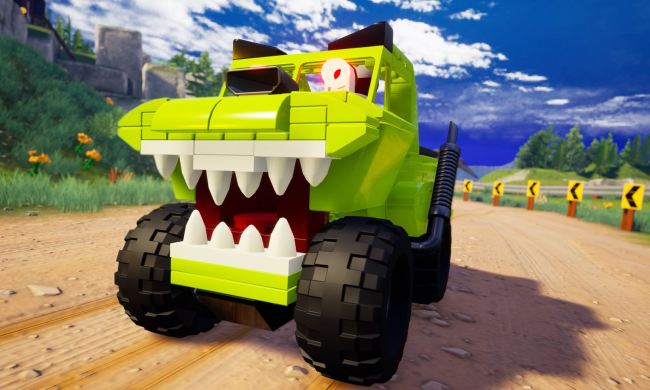This is a hands-on of our first impressions. Head here to read our full, full review of Dead Cells.
Dead Cells makes no bones about what it is. Developer Motion Twin describes the game, which is currently available through Steam Early Access, as “a roguelike Castlevania-inspired action-platformer.” That hodge-podge of callbacks puts it in good, if plentiful company. Looking for a single point of comparison is 2013 “rogue-lite” Rogue Legacy, which added a persistent, RPG-like progression to the dynamic repetition of modern Rogue-likes, such as The Binding of Issac and Spelunky. Add a dollop of Dark Souls influence, and a pixelated, faux 16-bit presentation, and you have a very zeitgeist-friendly stew going.
Reducing Dead Cells to a matrix of influences, however apt, sells it short, though. It’s fast-paced, addictive, fun, and brutally challenging. Far from derivative or pandering, Dead Cells takes some of today’s most iterated-upon genres and teaches a master class.
Metro-rogue-vania Souls
In Dead Cells, you control a slithering glob of necrotic goo. At the start of your run, the green glob drops from the ceiling of a dank prison cell and slithers into a freshly decapitated soldier’s corpse, giving it the ability to run and fight. From there, your task is to explore the labyrinthine castle, slaughter lots of zombies and monsters, and presumably escape. Dead Cells’ levels riff on the classic “Metroidvania” structure — distinct, interconnected zones that have metal names like “Promenade of the Condemned.” While the zones share the same overall configuration every time you play, each time you die and start back in the Prisoners Cells the details of each area changes, including the locations of items, weapons, and secrets.

You can see the Dark Souls in Dead Cells in the flow and feel of its combat, which is based around dodging and adapting to enemies and boss fights that telegraph their attacks. Each weapon has its own timing to master, and your dodge rolls provide precious invincibility frames, solidifying the inspiration. As far as Souls-like games go, Dead Cells most closely resembles the fast-paced and aggressive Bloodborne, from which it cribs the mechanic of allowing you to “reclaim” health you’ve just lost by doing damage just after getting hit. It isn’t a quite 2D translation of Dark Souls, but fans of From Software should certainly feel at home.
Between each area, you always stop for a chat with “the collector,” a creepy guy with a giant syringe on his back who collects “cells,” blue orbs you collect from fallen foes. In exchange, the collector unlocks persistent upgrades that make your character more powerful and better equipped to survive, ranging from the chance to keep some of the gold you earned on your previous run, to randomized starting equipment. Over time, you can also collect blueprints from enemies, which expands the pool of weapons and items that could appear in the future.
Dead Cells’ art is pixelated, but the game looks anything but retro.
Each run is defined what you find along the way. Your headless warrior has two slots for primary weapons — melee or ranged — and two slots for skills (grenades, traps, etc) and you’re off to the races. There’s a satisfying range of tactics available in the growing range of tools at your disposal. Having a wide array of tools, which complement each other well in different ways, makes each piece of gear more valuable: That, in turn, ratchets up the tension as larger collections of cells and blueprints. You lose everything that hasn’t been delivered to the Collector, so even when it it’s clear you may not be able to complete the game on a given run, the desperate drive to keep what you’ve earned always pushes you forward.
It’s a great system for inter-game progression. Unlocking more variety for subsequent playthroughs indirectly increases your power with more opportunities for synergy (like a sword that coats enemies in oil combined with anything that sets them on fire), while still maintaining the same general balance and difficulty curve.
Retrofuturism
Dead Cells’ art is pixelated, but the game looks anything but retro. Excellent design, layers, and lighting effects combine for a lush presentation that plays beautifully on low-spec systems and dedicated gaming rigs alike. The animations have a rotoscoped fluidity reminiscent of the original Prince of Persia.
French developer Motion Twin stands out for being collectively owned by its employees without any sort of corporate hierarchy. That communal approach to development has apparently worked extraordinarily well, funneling the team’s collective passion into a studied and masterful labor of love.
In its current, early access state the game features nine zones and two boss fights. While a well-trained, well–equipped player could burn through all of the existing content within an hour, reaching that point will take quite a bit longer. We’ve played eight hours so far and haven’t seen anywhere near everything the game has to offer yet. Motion Twin’s current plan is to “at least double” the amount of content in the game in the next 8-12 months: We can’t wait to see what they plan to do next.
Highs
- Lush visual presentation
- Fluid, Souls-like combat
- Solid roguelike variety
Lows
- Since it’s in Early Access, certain aspects of the game are unfinished






